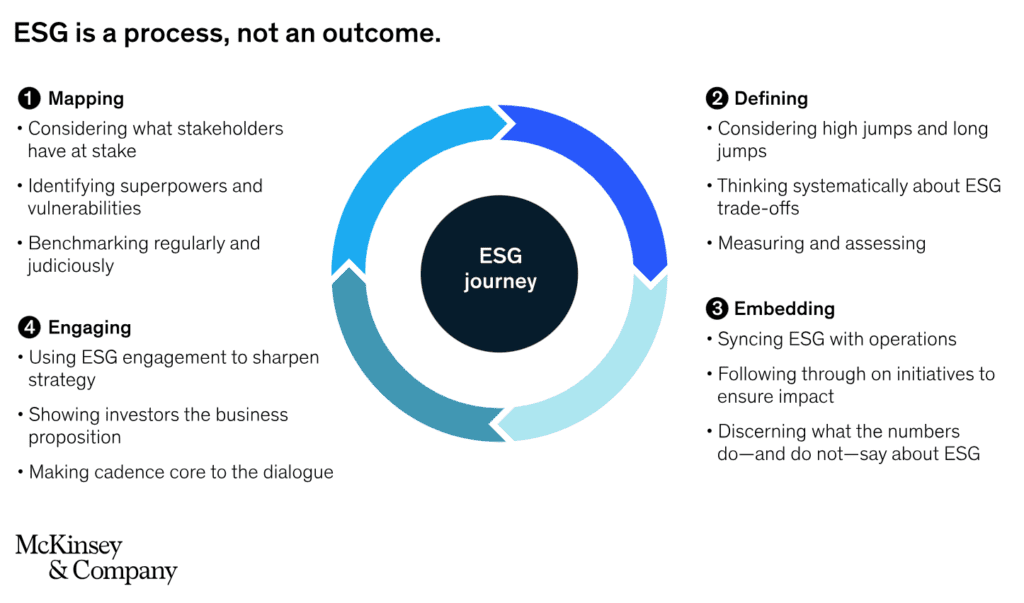@2021 invictIQ is a venture by Sprint Consultancy. All rights reserved. Privacy Policy.

How to Make ESG Real in Social Care?
by Mark Topps
Sustainability has gained momentum across various sectors and appears to be knocking on the door of social care, with many new care homes thinking about sustainably during the design stage and local authorities embedding green initiatives within their tender processes. As a society, we are increasingly realising the need to adopt sustainable practices.
In this blog I aim to shed some shed light on why care providers should prioritise sustainability, explore effective ways to implement initiatives, and highlight the benefits that can be achieved by doing so.
Society is changing and people are now becoming more aware of sustainability and this will soon include how people chose their care services. I can imagine there will eventually be a shift in those seeking care provision to have this in the back of their mind when choosing a service to support them or their loved one so getting in early is key so that your everyday sustainability practices are embedded into the service and you will be one step ahead of the game in demonstrating your commitment to preserving the environment for the next generation, reducing the organisations carbon footprint and conserving natural resources.
Government and regulatory bodies are increasingly implementing stricter environmental regulations. The Care Quality Commission has updated their ‘Well-Led’ criteria to focus on mitigating negative impacts your service has on environmental issues and local authorities have begun including sustainability within their tender applications and regardless of whether you agree that the regulator and/or local authority should be the driver for us to change our ways of working, it will definitely push us into that direction and we must focus on the positive outcomes it will have on our businesses. By integrating sustainability into our operations we will ensure compliance with evolving legal requirements, develop more sustainable practices which have been proven to save organisations money, through reduced utility bills, streamlined production processes and reduced fluctuating gas/electricity pricing.
Some other benefits of becoming a sustainable business include:
- Cost Savings (as detailed above)
- Enhanced brand image and reputation
- Possible attraction of new staff and people looking for care services
- Operational efficiencies
- Compliance with regulators
- Ability to bid for local authority tenders and other funding opportunities
- Positive employee engagement which can lead to better retention of your staff team
- You will be contributing to the world’s sustainability goals and build a better future for the next generation
So how can you become more sustainable?
I would begin with researching further than this blog and make a list and slowly work through it. There is little point in diving right in or you will be changing multiple processes and items within your service and it will become chaotic.
If you don’t have time to research further, I would suggest starting at these points:
1. Begin by assessing your current practices, identifying areas for improvement, and setting realistic goals. This audit should encompass energy consumption, waste management, supply chain practices, and employee engagement. A thorough understanding of the organisation’s environmental impact will guide the development of effective sustainability strategies.
2. Communicate the desire and plan for change so that your teams are aware of what may/could change. By communicating early, you will be able to answer any questions and/or concerns but also get the staff to be involved in the process. Frontline teams will have much more awareness of what is happening “on the floor” than you will and utilise their knowledge and insight.
3. Begin to develop and implement policies that promote sustainability throughout the organisation. This should include setting targets for reducing greenhouse gas emissions, implementing recycling programs, and encouraging responsible procurement practices. Sustainable policies should be communicated effectively to all staff to ensure awareness and adherence.
4. Continue to communicate with your team and foster a culture of sustainability. It is important to not just communicate but also educate and train staff about sustainable practices and encouraging their active participation in initiatives. When you encourage, you will get ideas and feedback which in turn creates the inclusive environment that empowers employees to contribute to the organisation’s sustainability efforts.
5. Transitioning to renewable energy sources, such as solar or wind power, is a crucial step towards sustainability. Invest in renewable energy infrastructure where feasible, reduce reliance on fossil fuels, and explore energy-saving technologies. You could also consider joining green energy initiatives and research further into renewable energy certificates to help showcase publicly your commitment to sustainability.
6. Consider electronic and digital systems as these can reduce the reliance on paper. Through embracing digital systems, we can progress in our sustainability goals whilst saving money on printing costs such as paper and ink, paper consumption and their associated waste. Of course, digital systems and processes increases the accessibility for people within the organisation, allows for better collaboration and also increases the opportunities for data analysis, reporting and auditing which in turn can enhances how we make informed business decisions. Alongside this, so there are many positives. The money you save on these costs could be put back into your sustainability plan.
Here are some immediate steps that you can plan to take in next 3 to 6 months:
Reduced Paper Consumption: The shift to digital systems minimises paper consumption, conserving trees and reducing the environmental impact of paper production, including energy and water usage. Less paper waste translates into a smaller carbon footprint and contributes to overall resource conservation.
Energy and Resource Conservation: Digital systems require less energy and resources compared to traditional paper-based operations. With reduced printing and physical document storage, energy consumption associated with printers, copiers, and physical file storage facilities decreases. This contributes to a greener and more sustainable operational footprint.
Waste Reduction and Recycling: By embracing digital systems, organisations can significantly reduce paper waste. This, in turn, minimises the need for paper recycling and the associated energy and water consumption required for the recycling process. Emphasising digital workflows helps organisations align with circular economy principles and reduce waste generation.
Environmental Education and Awareness: Digital systems can serve as platforms for promoting environmental education and raising awareness within organisations. By sharing sustainability-related information, best practices, and tips through digital channels, organisations can foster a culture of environmental consciousness and empower employees to actively contribute to sustainability efforts.
Benefits of Reducing Paper Usage and Printing Costs:
1. Cost Savings: The reduction in paper usage and printing costs directly translates into financial savings for organisations. Funds can be redirected towards sustainability initiatives, employee training, or other strategic investments, enabling long-term growth and competitive advantage.
2. Streamlined Operations: Digital systems streamline workflows and enhance operational efficiency. With easy access to digital files and collaborative tools, organisations can improve productivity, reduce administrative overhead, and expedite decision-making processes.
3. Improved Environmental Footprint: By minimising paper consumption and associated waste, organisations can significantly reduce their environmental impact. Contributing to the preservation of forests, conserving water and energy resources, and reducing carbon emissions are essential steps towards a more sustainable future.
4. Enhanced Data Security: Digital systems offer robust data security measures to protect sensitive information. Encryption, access controls, and secure backups ensure that
Remember, take small steps. This blog may be one of the first things you have read about sustainability but there are many other great resources available. Social Care is late to the party and many other sectors have started on the sustainability pathway, so make sure you look outside of the box and talk and look at other sectors to see what they are doing and the lessons they have learnt in the process.
MORE ARTICLES


Mark Topps is a social care leader who has worked in the care industry since 2004 and is currently working as a regional support manager. He regularly advocates, appearing on television, radio and podcasts and has started many campaigns for change in legislation and culture within the industry. Mark is the co-founder of The Caring View which is a social care podcast, YouTube show and free resource initiative for the sector. He also co-founded The Health and Social Care Club, which is an audio event hosted on LinkedIn. Mark is also the social media and marketing director at the National Association of Care and Support Workers.
Share
Sign up for our newsletter
